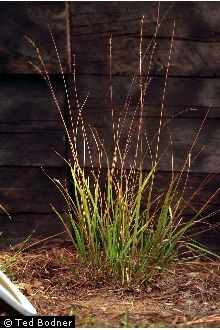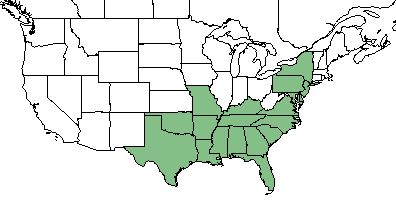Difference between revisions of "Chasmanthium laxum"
(→Distribution) |
|||
| Line 31: | Line 31: | ||
==Ecology== | ==Ecology== | ||
===Habitat=== <!--Natural communities, human disturbed habitats, topography, hydrology, soils, light, fire regime requirements for removal of competition, etc.--> | ===Habitat=== <!--Natural communities, human disturbed habitats, topography, hydrology, soils, light, fire regime requirements for removal of competition, etc.--> | ||
| + | ''C. laxum'' can be found in savanna-pocosin ecotones, sandhill-pocosin ecotones, moist hardwood swamps, and other moist habitats. <ref name= "Weakley 2015"> Weakley, A. S. (2015). Flora of the Southern and Mid-Atlantic States. Chapel Hill, NC, University of North Carolina Herbarium. </ref> | ||
<!--===Phenology===--> <!--Timing off flowering, fruiting, seed dispersal, and environmental triggers. Cite PanFlora website if appropriate: http://www.gilnelson.com/PanFlora/ --> | <!--===Phenology===--> <!--Timing off flowering, fruiting, seed dispersal, and environmental triggers. Cite PanFlora website if appropriate: http://www.gilnelson.com/PanFlora/ --> | ||
<!--===Seed dispersal===--> | <!--===Seed dispersal===--> | ||
Revision as of 18:16, 18 May 2018
| Chasmanthium laxum | |
|---|---|

| |
| Photo from USDA NRCS Plants Database. | |
| Scientific classification | |
| Kingdom: | Plantae |
| Division: | Magnoliophyta - Flowering plants |
| Class: | Liliopsida - Moncots |
| Order: | Cyperales |
| Family: | Poaceae |
| Genus: | Chasmanthium |
| Species: | C. laxum |
| Binomial name | |
| Chasmanthium laxum (L) Yates | |

| |
| Natural range of Chasmanthium laxum from USDA NRCS Plants Database. | |
Contents
Taxonomic Notes
Synonyms: Uniola laxa (Linnaeus) Britton, Sterns, & Poggenburg; Chasmanthium laxum var. laxum
Varieties: none
Description
C. laxum is a perennial graminoid of the Poaceae family native to North America. [1]
Distribution
C. laxum can be found along the southeastern coast from Texas to New York. [1]
Ecology
Habitat
C. laxum can be found in savanna-pocosin ecotones, sandhill-pocosin ecotones, moist hardwood swamps, and other moist habitats. [2]
Conservation and Management
Cultivation and restoration
Photo Gallery
References and notes
- ↑ 1.0 1.1 USDA Plant Database https://plants.usda.gov/core/profile?symbol=CHLA6
- ↑ Weakley, A. S. (2015). Flora of the Southern and Mid-Atlantic States. Chapel Hill, NC, University of North Carolina Herbarium.